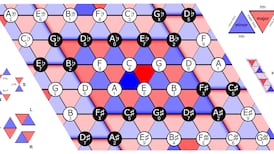The cloning method used to produce Dolly the sheep has been revamped making it possible to produce large numbers of human embryonic stem cells. It advances the promise of personalised medicine where a patient’s own cells can be used to produce replacement tissues of any kind with a perfect match and no possibility of rejection.
For years scientists had sought a way to produce cloned human embryos and stem cells using the technique used to produce Dolly 18 years ago. The method, somatic cell nuclear transfer, worked in other species but not in humans until a team based at the Oregon Health and Science University found a way to achieve this.
Ultimately it came down to something as unexpected as using caffeine to help make the method work, the scientists write today in the journal Cell.
The research represented “a great step forward” towards the delivery of personalised medicine, said Prof Frank Barry, director of the National Centre for Biomedical Engineering Science at NUI Galway. “This seems to be good news all round.”
The cell transfer method used for Dolly involved taking DNA from an egg cell and replacing it with donor DNA. The original research team at the Roslin Institute in Edinburgh found that applying a little electric shock would make the egg and donor DNA fuse and begin to grow, but they used up hundreds of sheep egg cells before producing Dolly.
Use of human eggs did not work and it was impossible to consider using hundreds of eggs in the hope of success. Research advances made since Dolly helped them refine the process however.
They used an adult skin cell as donor DNA and attached this to the hollowed-out egg. The researchers were able to gain control over exactly when the donor DNA and egg cell fused by adding a small amount of caffeine to the liquid where the egg was kept.
They used up only two eggs to deliver cloned embryos that produced stem cells indistinguishable from those taken from a naturally fertilised egg, the researchers said.
The goal is to produce stem cells that are perfectly matched to the DNA donor. These cells are in a pluripotent state which means they can convert into any of the 200 or so cell types in the body. The goal is to use them to provide tissue transplant material to help treat brain disorders, damage caused by cardiovascular disease and as other replacement tissues, Prof Barry said.










